Nature Notebook - A Notebook Companion™ to Nature Anatomy
Nature Notebook + Nature Anatomy
Nature Anatomy by Julia Rothman is often a go-to for nature study. Illustrator Julia Rothman’s beautiful hand-drawn sketches bring nature to life. There so much nature study and science you can squeeze out of this book, and even if you have other science books laying around, you will likely find yourself reaching for this beauty often.
To get the most out of Nature Anatomy, we recommend using the Nature Notebook with it (a publisher approved Notebook Companion™).
How Our Notebook Companions Work
Using Julia Rothman’s Anatomy Series alongside our companion notebooks allow students to document their learning in customizable ways. Our notebooks are loved by art enthusiasts of all ages—both younger students and even kids in high school.
Students will follow along in the Nature Anatomy book at their own pace and use our notebooking journal to answer open-ended question prompts about what they read. In addition, they will record pages of facts, draw diagrams, create charts, and make colorful drawings of what they have learned. The page layouts of the Nature Notebook will vary depending on the topic.
So, grab your favorite pens and get ready to experience science in a whole new way!
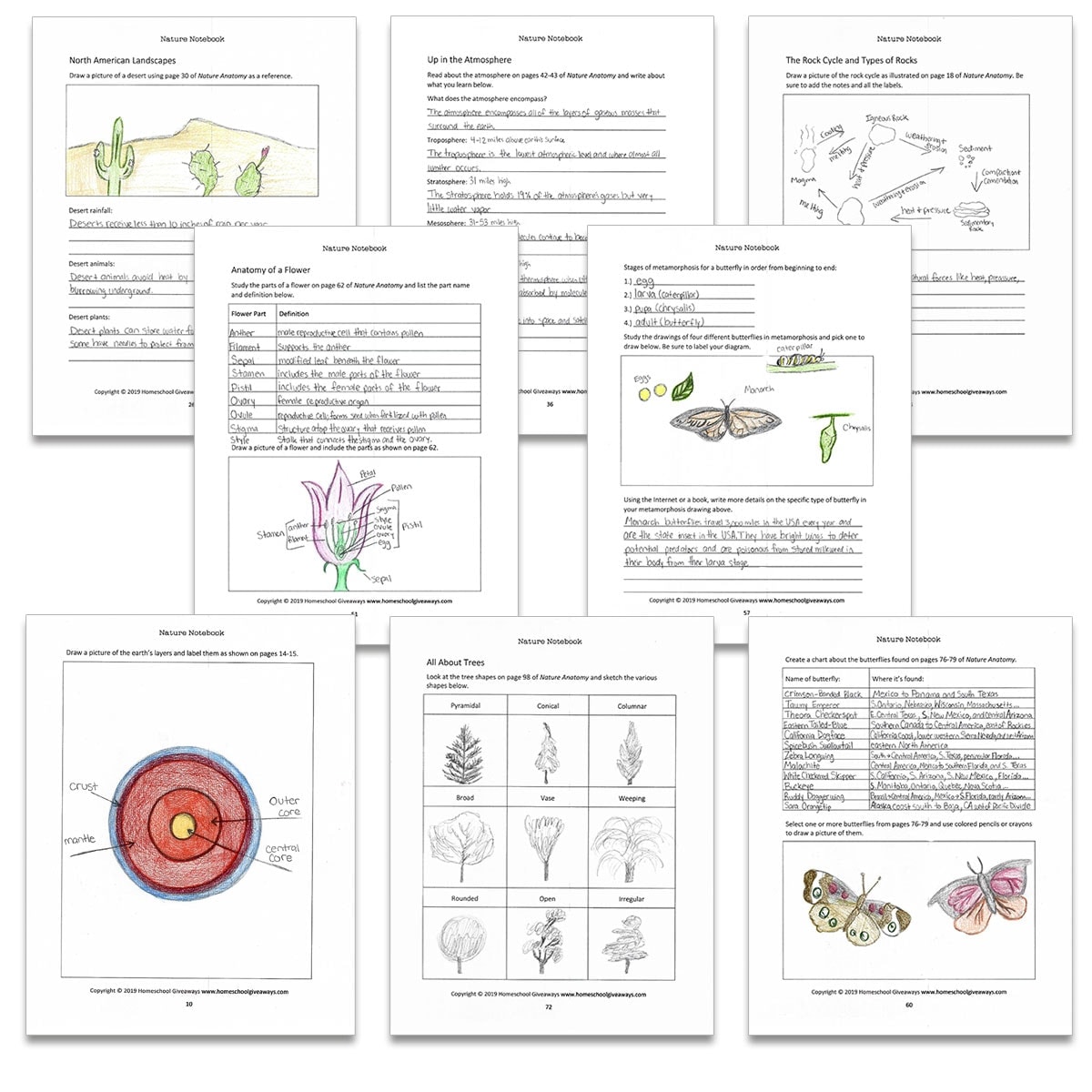
What Age is the Nature Notebook Appropriate For?
Although our notebooks are very flexible and can be adapted for younger and older children, this series is best suited to grades 3-8, however even high school students enjoy using it.
Like our other open & go curriculum, there is no prep-work involved – you simply grab your copy of the book and your notebooking journal and work at your own pace.
Nature Anatomy by Julia Rothman
Get ready for an awe-inspiring journey through pieces of the natural world with Julia Rothman! Prepare to be amazed as art and science come together in her captivating visual tour. Discover the secrets of mountain formation, unravel the mysteries of mushroom life cycles, and explore the intricate variety of feathers on different birds.
Through Rothman’s whimsical illustrations, enlightening diagrams, and fascinating dissections, you’ll be transported into a world of wonder. Join me as we embark on a spirited exploration of Earth and water, plants and animals.
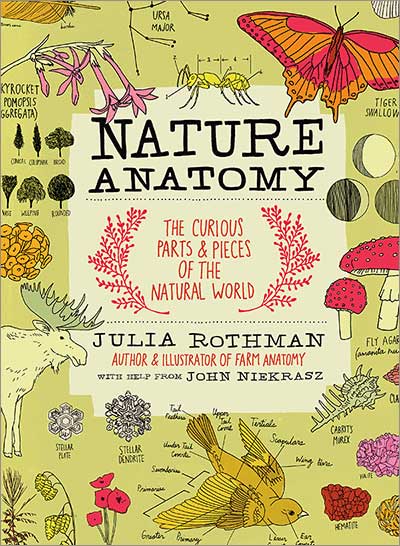
Some of the nature topics covered
- Earth – layers of the Earth, minerals, the rock cycle, fossils, landforms, mountains, and more.
- Atmosphere – weather, the water cycle, storms, snowflakes, rainbows, moon phases, constellations, and more.
- Plant Life – flowers, butterfly plants, sedges, grasses, edibles, and more.
- Trees and Leaves – anatomy of a tree, parts of a tree, tree trunks, leaf identification, bark, cones, seeds, and fruit.
- Animals – squirrels, bears, snakes, lizards, horned animals, animals with antlers, mammals, a frog’s life cycle, and more.
- Flying Creatures – bats, birds, feathers, birdcalls, nests, beaks, bird behavior, owls, and more.
- Bodies of Water – ponds, freshwater fish, saltwater fish, water bugs, frogs, ecosystems, anatomy of a jellyfish, sand, shells, coral reefs, ocean floor, layers of the ocean, tide pools, and more.
Blending Art & Science
Immerse yourself in the captivating blend of art and science with Nature Anatomy. Uncover the intricate details, functions, and distinct personalities of the natural world through Rothman’s delightful illustrations and engaging activities.
Embark on a journey through the enchanting anatomy of creatures like jellyfish; delve into the hidden depths inside of a volcano; witness monarch butterfly migration; unravel the secrets behind breathtaking sunsets, and so much more. With each turn of the page, you’ll be inspired to embrace your curiosity and observe the wonders that surround us through Rothman’s original illustrations.
Nature Anatomy is a secular book and our companion notebook can be used with any worldview (see note below). Learn more about Nature Anatomy and the other books in the series by visiting the publisher’s website.
Product Worldview Information
All Daily Skill Building Notebook Companions can be used successfully in a Christian homeschool without compromising your faith. Whenever Daily Skill Building offers a Notebook Companion™ for a secular book, such as Nature Anatomy, we carefully review the content and include a note for parents highlighting sections of the book you may want to skip. This way you can make your own determination as to whether or not to include them.
When determining if our Daily Skill Building Notebook Companions will work in a secular homeschool, please know that we do not add any faith-based additions or topics to our Notebook Companions. Some Notebook Companions are written to accompany a Christian resource, and as such will be noted.
Julia Rothman Companion Notebook Series
Nature Anatomy is just one gem in Rothman’s remarkable Nature Anatomy Series. Each book promises a unique adventure filled with captivating knowledge. We also have Notebook Companions™ for other volumes in Julia Rothman’s Anatomy Series: Farm Anatomy, Ocean Anatomy, and Food Anatomy.
When you buy the bundle you get a free bonus! Kids will have fun learning about birds and documenting their birding activities using the Birding Notebook alongside Audubon Birding Adventures.
-
*Digital Product
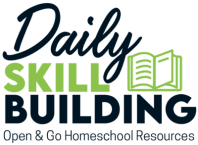
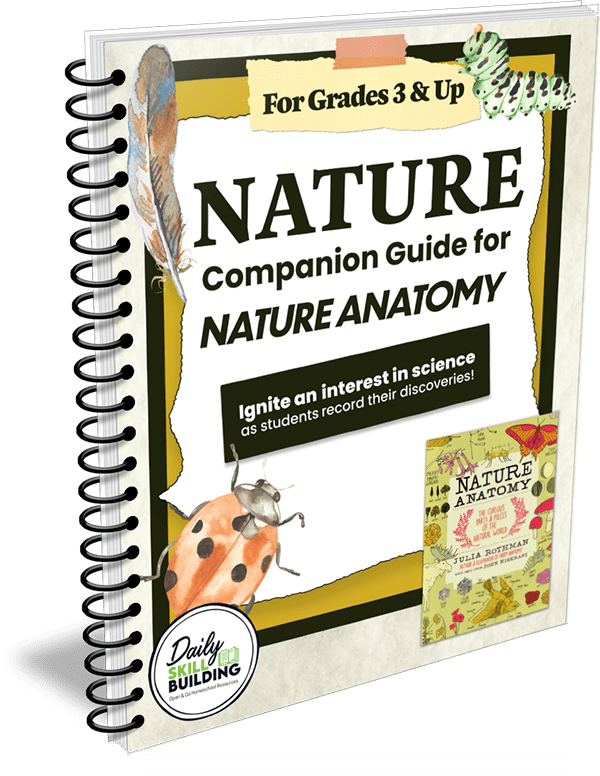



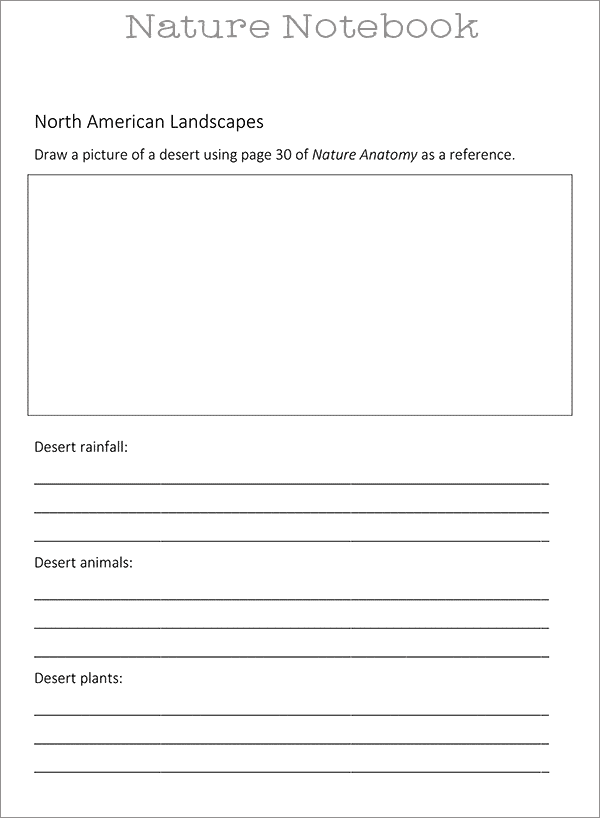
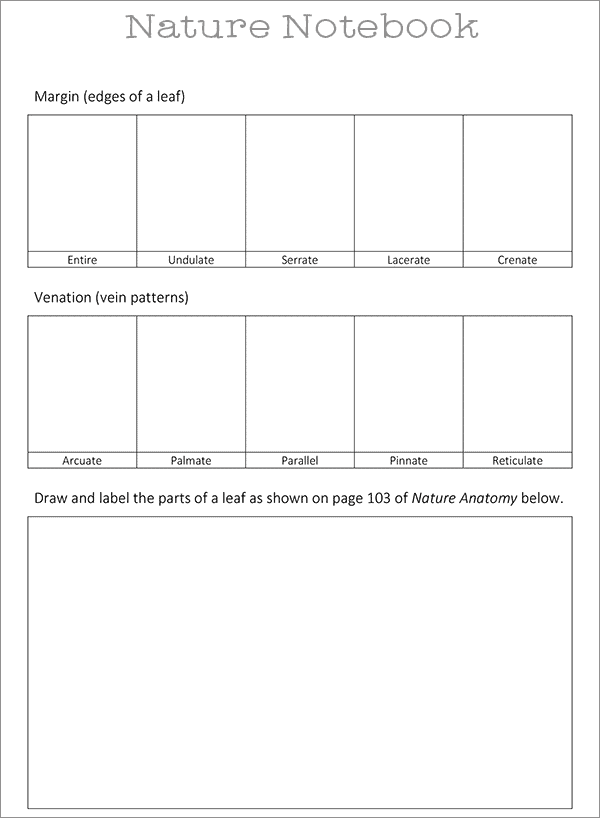
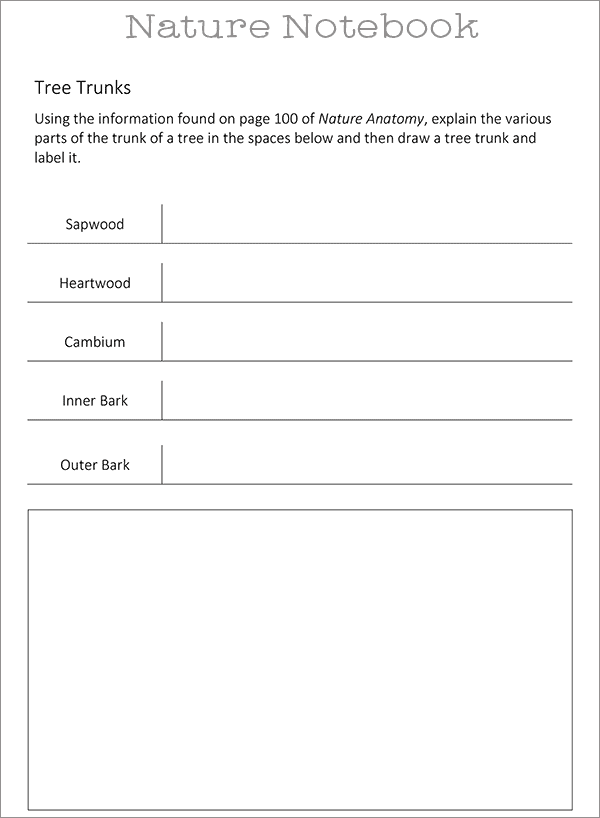
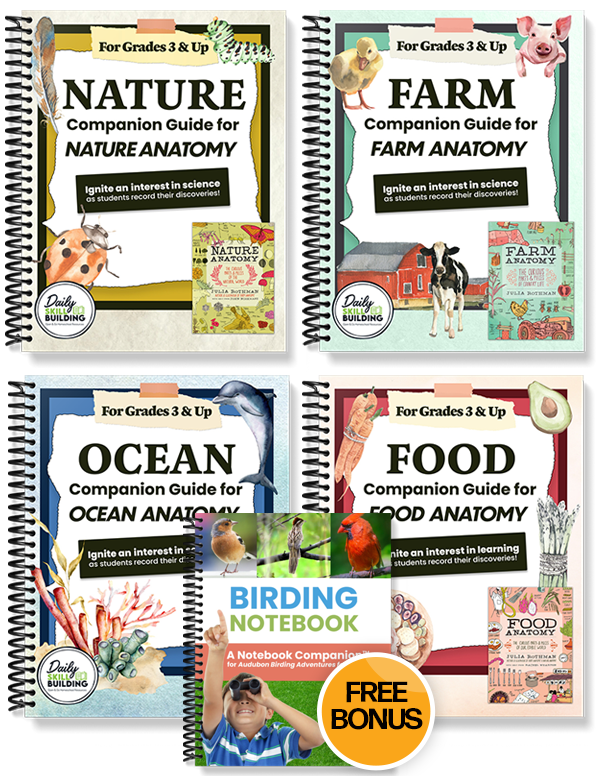
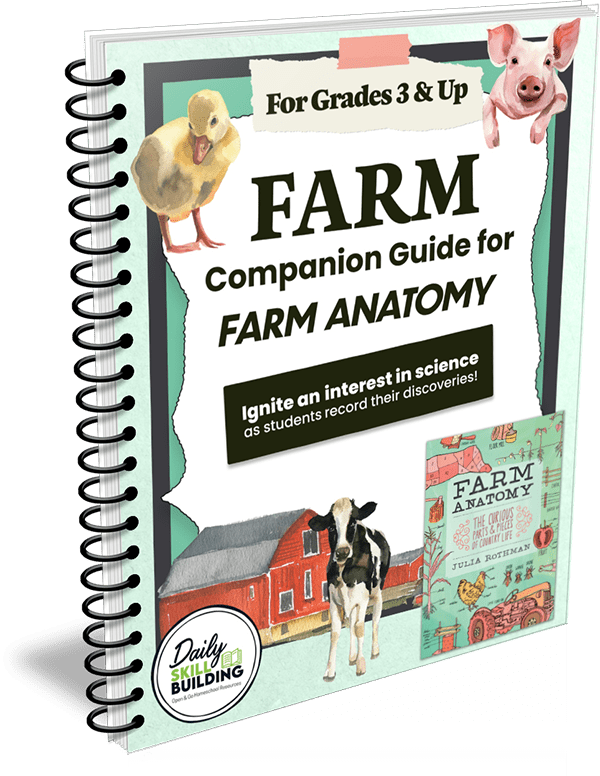
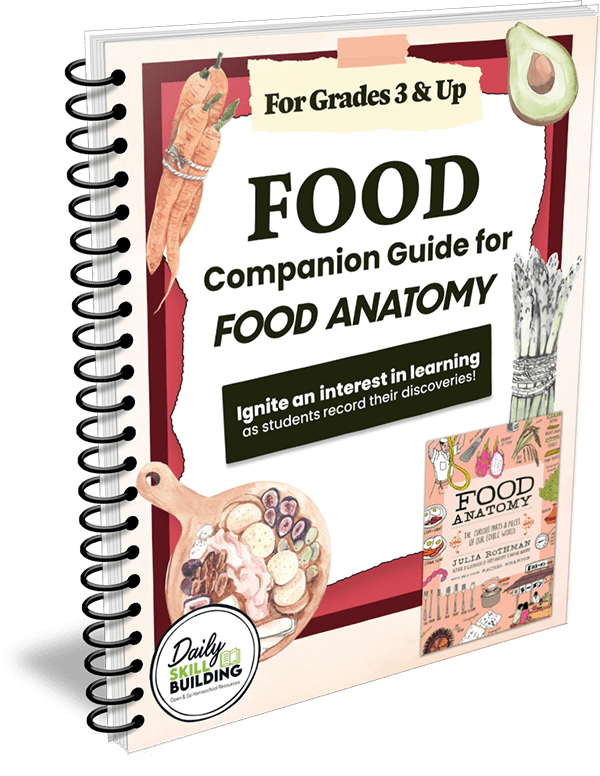
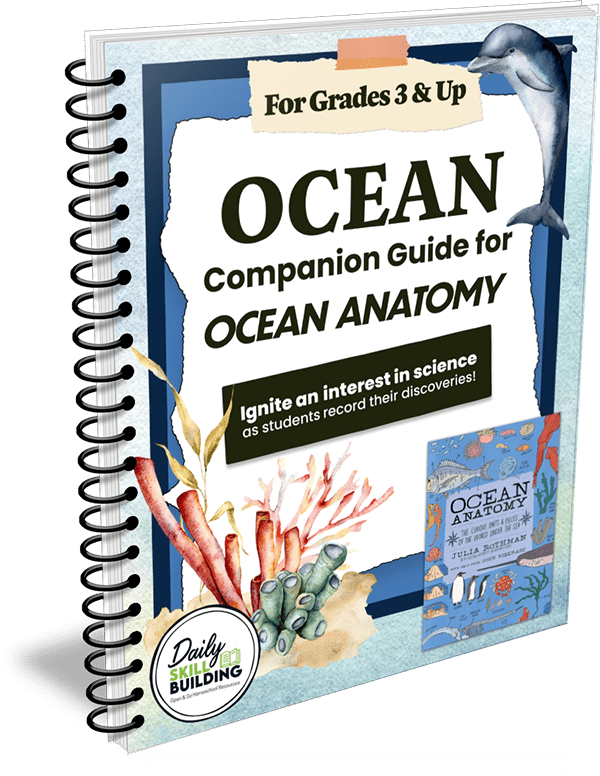
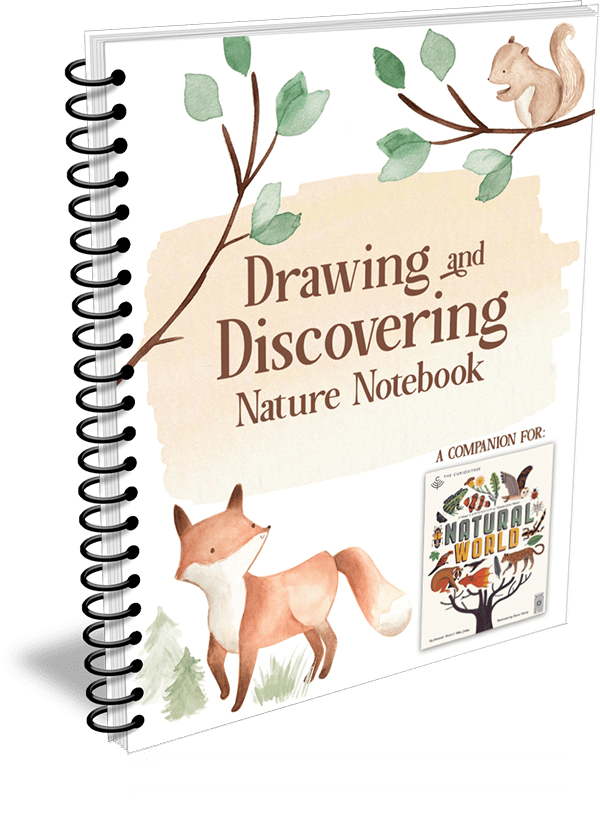

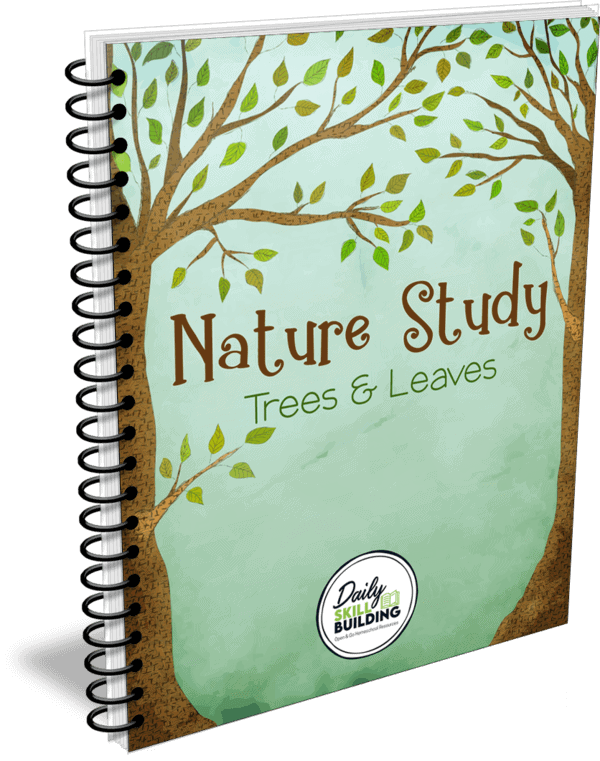

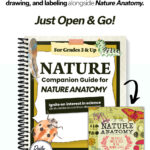
Jan Craig –
We are really enjoying this notebook as part of our science curriculum. My child is developmentally delayed and this notebook allows us to do short, interesting lessons. Nature Anatomy is a wonderful book but without the Nature Notebook I would struggle too much to use it to teach science. The Nature Notebook is perfect for our needs!
Mary Ellen VanMarter –
I am using this with my special education class as a supplement to our biology unit. It is clear and well laid out. I look forward to using more of the resource and additional products in this series.
Janica Eames –
Julia Rothman’s books have beautifully sat upon our shelves, but I wanted my kids to get more from them, than just look at them a few times. These notebooks are what we needed! My kids are absorbing the information in the books now!
Amberly May –
This notebook is the perfect companion to the Julie Rothman Nature Anatomy book! The “open and go” layout is perfect for our homeschool. I am really looking forward to using this notebook in the upcoming school year.
S Versey –
I got this for my soon to be 4th grader to work on over the summer. I underestimated how large it was. I decided to only print about half of it, and if it gets completed then Ill do the other half next summer. I like that it corresponds easily with the book and is easy to follow. I would suggest printing on thicker pages though since water colors would be fun do with with some of the drawings. Overall, i think its a great resource and is great for children who love to draw.
Aspen Allen –
Can’t wait to jump into this! My oldest loves to explore nature and I think this will be great for all of the adventures we have lined up for the summer!
NOEMI ROSADO –
The Nature Companion Notebook is a very good partner to the Nature Anatomy book. I really like how our children will be learning in a fun, colorful, interesting new way. They are both really artistic, so the way that they will give answers and accompany them with sketches and/or drawings is simply a plus. We had their notebooks printed with spiral binding- they look great and are a nice addition to our homeschool:)
Dani –
I am a homeschool Mom, but I bought the Nature Anatomy Notebook Companion for myself. I have been working in it daily while we are at the table for school. I love working on the drawing pages! I have seen a great deal of improvement in my artwork and my handwriting with this daily practice. The best part, my kids are so interested in what I am doing that they have started working in their own journals without being prompted.
A Baker –
This has been a great addition to our nature studies this month! We’re doing Marine biology this month too so I just printed that notebook to have on hand as well. At the beginning of the month I just go thru the book and notebook and mark with a sticky tab the pages that go along with what we’re studying and let her loose.
Our daughter recently turned 9.
Kristen Allender –
My daughter (3rd grade) is loving this notebook! She loves to draw so this is perfect for her. I also like that she can do it on her own while I’m working with other kids. It’s a great addition to our homeschool!!
M Lapierre –
My daughter (10) loved these independent notebooks to go along with the beautiful book series! They are also a great addition to any science curriculum.
K Polley –
These are great. My daughter loves the independence the allow.
Marcia Cabaday –
I am not sure why I put off buying this. The books are beautiful and so is this journal to do with it.
My two girls (ages 17 and 9) have both loved it.
Kerri Hults –
The open and go nature notebook has really been a life saver for me. My 10 year old actually enjoys working in it which is the best part for me.
Sarah Williams –
This journal is amazing!! I had this printed and spiral bound by Family Nest Printing. The combo of the book, this journal and the printing have been a great way for my son to study nature. He is so excited to draw the pictures, read the book and fill in the journal. Thank you so much! Can’t wait to try others!!
Carrie Fernandez –
We are so glad to hear your son loves the notebook companion to Nature Anatomy. We love notebooking in our homeschool!
Rachel Prichard –
Just take my money!!!! lol
I’m in love with these companion Journals! I have zip pouches that I put the Companion Notebook in, along with the Original Book and colored pencil pouch, and I send them outside every morning with that Zippered portfolio under their arms. They LOVE IT!
Carrie Fernandez –
Zip pouches are such a GREAT idea! I am not the most organized homeschool mom, I may steal this. 🙂
Dedra Sheffield –
When a homeschool science curriculum just wasn’t making us happy, I had a friend suggest Julia Rothman books. Luckily, I stumbled upon this companion notebookbook for Nature Anatomy. It was exactly what I wanted! Something that would foster our 6th grader’s imagination, broaden observation skills, while still leaving room for expounding and self-exploration into various topics.
I heartily recommend and encourage anyone to purchase this product. I WISH I would have purchased the complete set in the beginning. Yes, I like it that much!
Lata –
One would buy this Companion book after owning the original book “Nature Anatomy” but for me it was the other way round. I was so in love with this product that I purchased it and then purchased the original book. The amount of activities you can extend is beyond limit. This companion has exceeded our expectations. We use it in our nature walks . My kids love it.
Melissa –
I know this is geared toward younger students, but I’m having my 10th grader use it and it’s been phenomenal. Some kids are more science driven, he is not, so it’s been a perfect supplement to add to our science curriculum. Even I’m learning new things with the Julia Rothman books. I will definitely pick another notebook once he finishes this one.
C Spalding –
My 8 year-old daughter dreams of being a scientist and loved doing the Nature Notebook last year, along with Julia Rothman’s Nature Anatomy book.
Catherine Roach –
We love Julia Rothman’s journals and these notebooks are an excellent supplement.
Koleiah –
Journaling/Notebooking is such a great way to solidify information learned and the layout of the Nature Notebook makes it inviting. There is just the right combo of writing and artwork! My daughter loves it.
Yvie –
Living out in the country gives our children the ability to explore nature in a unique way, but they’re not always sure what they’re seeing. We began working through Nature Anatomy and the accompanying workbook, and now we have a daily routine of going outside and looking for what we’re studying. Everyone is learning so much! When we do the drawings and take notes on the world around us, it reinforces what we’ve learned that day.
Stacey W. –
We love studying nature in our homeschool. I have 5 kids who love birds, trees, gardening, and of course dirt! Now I can put my book to good use with the notebook that goes along with it. Very happy and plan to buy all of them in the series!
Shelly –
Our family loves the Julia Rothman books! I’ve had them on my shelf for a while, but was unsure of how to incorporate them into our homeschool day. The addition of a notebooking journal has made all the difference. We have the complete set and my kids love it!